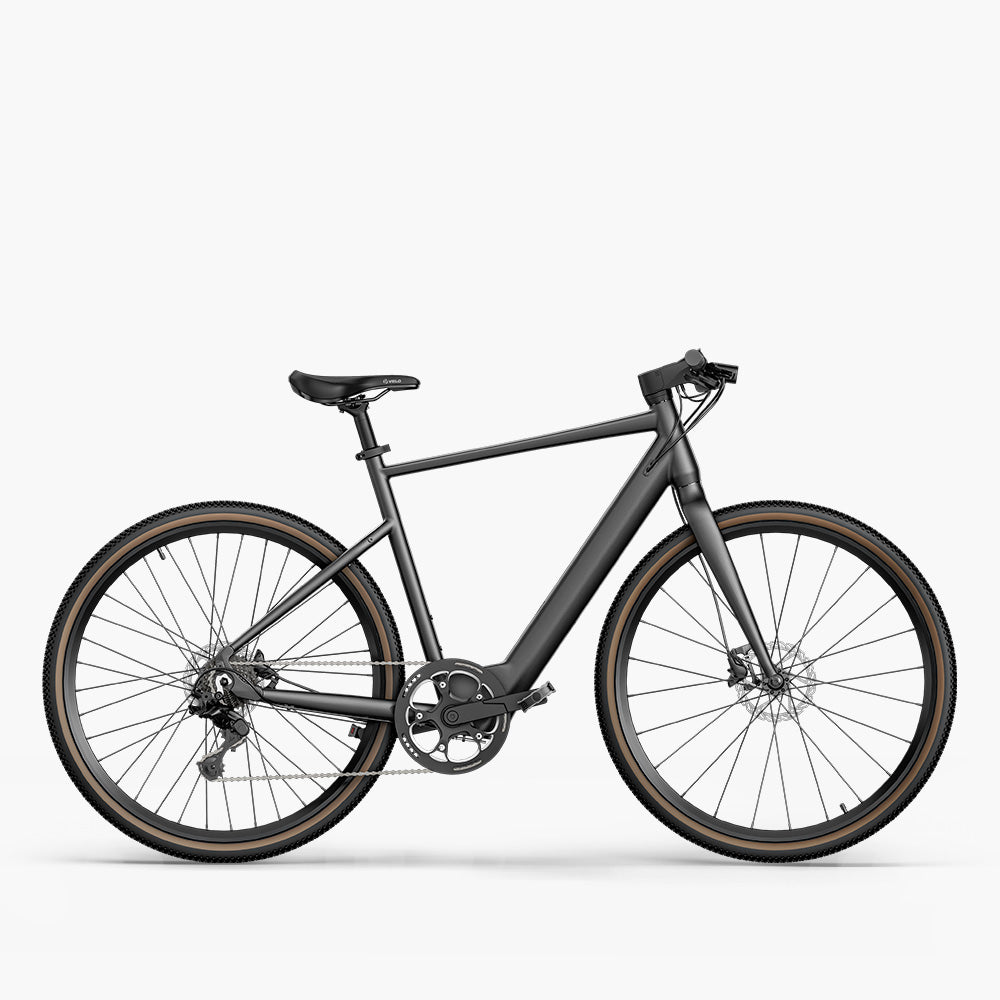The battery's installation position and how you use it directly affect your daily charging convenience, riding feel, and even how easy it is to maintain. For example, some batteries can be easily removed and taken indoors for charging, while others are integrated into the bike frame for a cleaner look but require you to bring the whole bike close to a power outlet. Understanding these differences isn't meant to complicate your choice — it's to help make your riding experience smoother and more hassle-free.
Different Battery Installation Positions

Battery installation generally falls into two categories: integrated batteries and external batteries.
Integrated batteries are built into parts of the frame such as the down tube, seat tube, or rear triangle, so the battery is almost invisible from the outside. These are common on city commuter bikes or lightweight folding e-bikes. The biggest advantages are a sleek appearance and a concentrated center of gravity, making the bike more balanced and stable for better handling.
Pros:
-
Sleek, minimalist look with clean frame lines
-
Typically located in the down tube or bottom bracket area for better weight distribution
-
Harder to steal due to concealed placement
-
Better protection from weather, dirt, and moisture
Cons:
-
Some are non-removable, making charging less convenient if no power outlet is nearby
-
Limited frame space may restrict battery capacity and upgrade options
-
More complex to repair or replace—often requires tools or professional service
External batteries are mounted visibly on the frame surface, rear rack, or seat tube. They can be seen and removed easily, with flexible wiring and installation that makes maintenance and replacement simpler.
Pros:
-
Easily removable—charge anywhere without moving the bike
-
Simpler to replace or upgrade with larger capacity batteries
-
Easier access for inspection, cleaning, or maintenance
Cons:
-
Exposed placement is more vulnerable to weather and physical damage
-
Greater theft risk if not securely locked
Does Battery Position Affect Range and Safety
The battery's position itself doesn't directly determine range but does influence the bike's center of gravity and energy efficiency, which can cause the same battery capacity to perform differently in real-world riding. An e-bike's range depends on battery capacity, motor efficiency, bike weight, riding habits, and road conditions. While capacity is the foundation, battery placement affects riding stability and power consumption, indirectly impacting range.
For example, a hidden mid-mounted battery is typically located near the down tube or bottom bracket — the bike's "center zone." This layout concentrates weight and improves stability, enhancing energy conversion efficiency while riding. In contrast, batteries mounted in baskets or on rear racks shift weight forward or backward, which can cause wobbling or bumpiness, affect handling, and make the motor work harder to maintain speed and stability, increasing energy use. This effect is especially noticeable on hills or rough terrain.

Can You Remove the Battery for Charging
Currently, e-bike batteries are mainly available in two types: removable and non-removable.
Removable batteries are usually installed on the outside of the down tube, behind the seat tube, or on the rear rack. They connect to the frame with slots, locks, or quick-release mechanisms. With a key or button, you can unlock and remove the battery in seconds. This offers great flexibility for charging anywhere and makes swapping spare batteries easy — ideal for commuters, travelers, or those who often charge indoors.
Non-removable batteries are typically found in integrated designs, enclosed inside the frame. They look neat and sleek but require bringing the entire bike close to a power outlet to charge. This can be inconvenient if you live upstairs or don't have a dedicated garage or charging spot. Some “technically removable” integrated batteries need tools and are not practical for regular removal. Their advantages include higher security, better waterproofing, and a design that appeals to users who prioritize style and handling — like Fiido Air and Fiido C21 models, which have fully integrated non-removable batteries.
What Types of Batteries Does Fiido Offer
Fiido offers e-bikes with removable integrated, external removable, and non-removable integrated battery designs:
-
Removable integrated batteries: Models like Fiido D11, X, M1 Pro, M25, C11, C11 Pro, C700, and Nomads hide the battery inside the frame but feature easy removal mechanisms. Just open a cover or turn a key to take the battery indoors for charging. This balances looks and convenience, perfect for users who want a sleek design but flexible charging.
-
External removable batteries : Models like Fiido L3 and T2 mount the battery on the seat tube or frame exterior for quick removal without disassembly. Great for long commutes, road trips, or homes without charging spots. External batteries also allow for easy battery upgrades and longer range.
-
Non-removable integrated batteries : Models like Fiido Air and C21 have fully enclosed batteries that can't be removed by users. Charging requires bringing the whole bike to a power source. This ultra-clean look suits users who care about design and have dedicated charging spots like balconies or parking spaces. These models are often lighter, making them ideal for beginners or riders who prefer lighter bikes.
Fiido C21 E-gravel & city E-bike
Urban commuter electric bike with torque sensor, only 17.5kg.
Reminder: Prices are subject to the product detail page ,some earlier card details may have been updated.
Final Thoughts
So, do you now understand how different battery installation positions affect your riding experience and everyday use? Choosing the right battery type not only makes your rides more comfortable but also improves charging and maintenance convenience. If you're interested in learning how to extend your battery's life and care for it daily, check out our “Ultimate Guide to E-Bike Battery Maintenance” to keep your electric bike battery in top condition.
FAQ
Q: How can I reduce maintenance and replacement difficulties with integrated batteries? A: Regular professional maintenance helps prevent damage from overcharging or deep discharging. Also, choose brands with reliable after-sales support to get expert help when battery removal is needed.
Q: What should I consider when replacing a battery regarding its position? A: Make sure the new battery matches your bike’s specifications, especially the connector, size, and mounting location. Integrated batteries usually require original parts, while external batteries often have more flexible options.
Q: Are external batteries easier to steal? How can I protect mine? A: External batteries can be stolen if not locked. Use models with battery locks, always lock the battery when parked, and if possible, remove and take the battery with you when leaving the bike unattended.
Q: Does battery location affect maintenance? A: Yes. External batteries are easier to inspect, remove, clean, and replace, often allowing users to perform simple maintenance themselves. Integrated batteries typically need specialized tools and should be serviced by professionals.

















